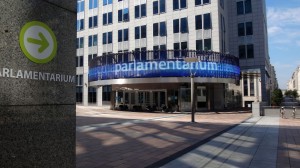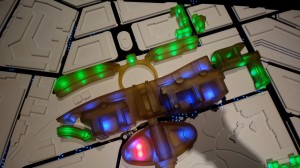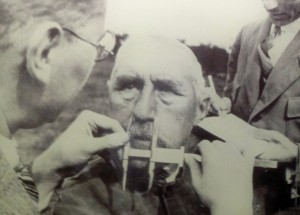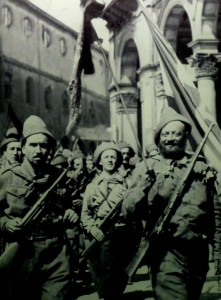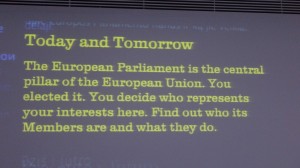European Union Parliament
The Parlamentarium is the visitors center for the Parliament of the European Union. It’s fresh, interesting and a must see when you visit Europe if you want to gain a better understanding of Europe and it’s place in the world.
The Parliamentarium is located on a large plaza surrounded by tall, glass buildings in the new part of Brussels. I always think of Brussels as old stone buildings and gilt so I was surprised to see soaring blue glass office buildings in the downtown. Once I realized that the old town is more for tourists and shopping in Brussels and the new town is for government and business, I began to discover this split in cities throughout Europe. Of course Europe is new and vibrant. It just had never registered with my view of the old country.
I absolutely loved the Parliamentarium. Because of my visit, I better understand the roots of the European Union. The EU is so much more than open borders and common currency.
I took subways across town from the Grand Place. As I walked uphill from the subway stop for Parliament, I passed numerous offices for the members of Parliament and the member countries. For example, here’s the front door to Hungary’s offices. These offices remind me of the embassies in Washington, DC. It makes sense that each country would need their own offices; I just had not considered that before.
As you continue your uphill walk, tall buildings break away to reveal a large plaza and the Parliamentarium. It’s a big, modern building made of glass that glows blue in the mid-day sun. A large digital screen tells you that you have arrived at the Parliamentarium.
 Inspiration begins in the plaza with a shiny black monument on the ground just outside the front doors of the Parliamentarium. The plaque quotes the words of Father Joseph Wresinski, a priest who worked with the very poorest people of France beginning in 1956. He, himself, had grown up in poverty and social exclusion and he wanted better for his parishioners. Father Wresinski founded ATD Fourth World to layer evidence on top of soup kitchens and clothing distribution centers to provide research into extreme poverty. “Father Joseph’s firm purpose was to unite all sections of society around the very poorest (http://www.joseph-wresinski.org/Father-Joseph-Wresinski.html). The plaque in Belgium displays the same words as a plaque in the Trocadero Human Rights Plaza in Paris:
Inspiration begins in the plaza with a shiny black monument on the ground just outside the front doors of the Parliamentarium. The plaque quotes the words of Father Joseph Wresinski, a priest who worked with the very poorest people of France beginning in 1956. He, himself, had grown up in poverty and social exclusion and he wanted better for his parishioners. Father Wresinski founded ATD Fourth World to layer evidence on top of soup kitchens and clothing distribution centers to provide research into extreme poverty. “Father Joseph’s firm purpose was to unite all sections of society around the very poorest (http://www.joseph-wresinski.org/Father-Joseph-Wresinski.html). The plaque in Belgium displays the same words as a plaque in the Trocadero Human Rights Plaza in Paris:
“Wherever men and women are condemned to live in poverty, human rights are violated. To come together to ensure that these rights be respected is our solemn duty.”
 An unusual information/monument stood just outside the doors of the Parliamentarium, honoring Andrei Dmitrievich Sakharov, the Russian nuclear physicist, Soviet dissident and human rights activist. “The father of the Soviet hydrogen bomb, Andrei Sakharov, was awarded the Peace Prize in 1975 for his opposition to the abuse of power and his work for human rights” (Nobelprize.org). The words under the letter “S” say:
An unusual information/monument stood just outside the doors of the Parliamentarium, honoring Andrei Dmitrievich Sakharov, the Russian nuclear physicist, Soviet dissident and human rights activist. “The father of the Soviet hydrogen bomb, Andrei Sakharov, was awarded the Peace Prize in 1975 for his opposition to the abuse of power and his work for human rights” (Nobelprize.org). The words under the letter “S” say:
Shortly after winning the Nobel Peace Prize, Sakharov said, “International confidence, mutual understanding, disarmament and international security are inconceivable without freedom of information, freedom of conscience, the right to publish, the right to travel and the right to choose the country in which one wishes to live. Like Andrei Sakharov, the European Parliament strives to ensure that every citizen should have the right to form an opinion and live in a democracy.” The Sakharov Prize, which is awarded annually by the European Parliament for people and organizations dedicated to human rights and freedoms, is named in his honour (Wikipedia).
To enter the free Parliamentarium, I had to go through a body scan and bag check, typical of public buildings in Europe. Also typical, was a large locker area where I could stow my backpack and freshen up in sparkling clean restrooms.
Once inside, the teaching continued as I walked down a very long hallway hung with large posters that framed questions currently under consideration by the European Parliament: immigration, food, the seas.
Light-up models showed where the official buildings of the European Union are located in Europe with buildings in Brussels, Strasbourg and Luxembourg. The Parliamentarium website says, “Dynamic, interactive multimedia displays guide our visitors through the journey of European integration and the impact this has on our everyday lives. The Centre caters to all 24 official languages of the European Union and admission is free. The facilities have been designed to make them fully accessible to those with special needs.”
Signage within the Parliamentarium explain how the European Union was conceived and how it operates today.
When I visited the Nobel Peace Museum in Oslo two years ago, I learned that the European Union was not about a common currency and open borders – those were just artifacts of the European Union. The EU is about peace. The people of Europe were already talking about the importance of a union in the early 1900’s. The two plaques above quoted the dreams of two of Europe’s leaders.
A moving exhibit of WWII showed the horrors of war, including measuring faces to see if they met Arian standards.
That exhibit of ugliness was countermanded by an exhibit of the liberation of Europe.
I got to see photos on exhibit that I had never seen before and it was joyous to see the liberation through the eyes of Europeans.
The educational spaces of the Parliamentarium were state of the art with high tech lighting and electronic displays. In one rather odd display you ducked into a lamp-shade-like structure and read about people and ideas particular to the EU.
This is a display of the delegates to the European Parliament. Members come from 28 member states. Together they work out compromises and enact laws for the whole EU. I could read about the EU in six different printed languages but was happy to stick with English.
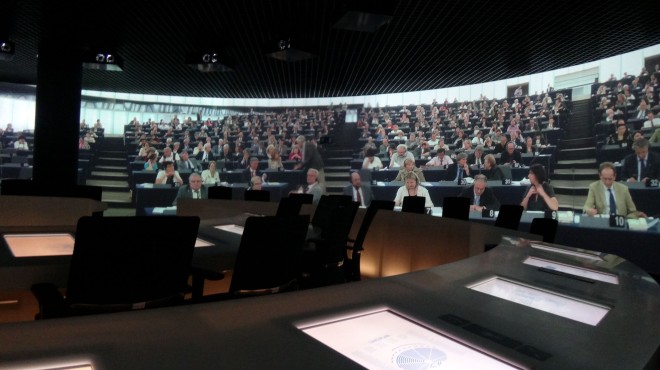 I sat in a replica of the parliamentary chamber and listened to debate about an issue important to the EU – then I got to vote on it as if I were a delegate. What a learning opportunity!
I sat in a replica of the parliamentary chamber and listened to debate about an issue important to the EU – then I got to vote on it as if I were a delegate. What a learning opportunity!
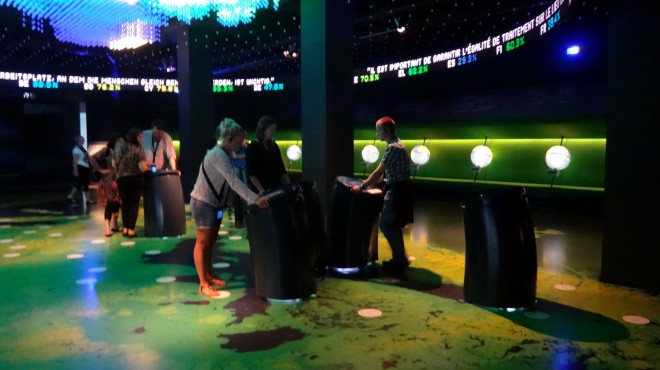 This was a really cool life size game. Players took control of a podium and read instructions on a case scenario. Then the players moved their podiums around the room to confront or compromise with other member countries. It was like an individualized Model UN.
This was a really cool life size game. Players took control of a podium and read instructions on a case scenario. Then the players moved their podiums around the room to confront or compromise with other member countries. It was like an individualized Model UN.
An American? Who knows? I often could not tell the Americans from the Europeans.
You can virtually visit the Parliamentarium. The website includes virtual visits and deeper explanations of their purpose. This was one of my very favorite stops in Europe – equal to visiting the US Capitol Building. Don’t miss it.




